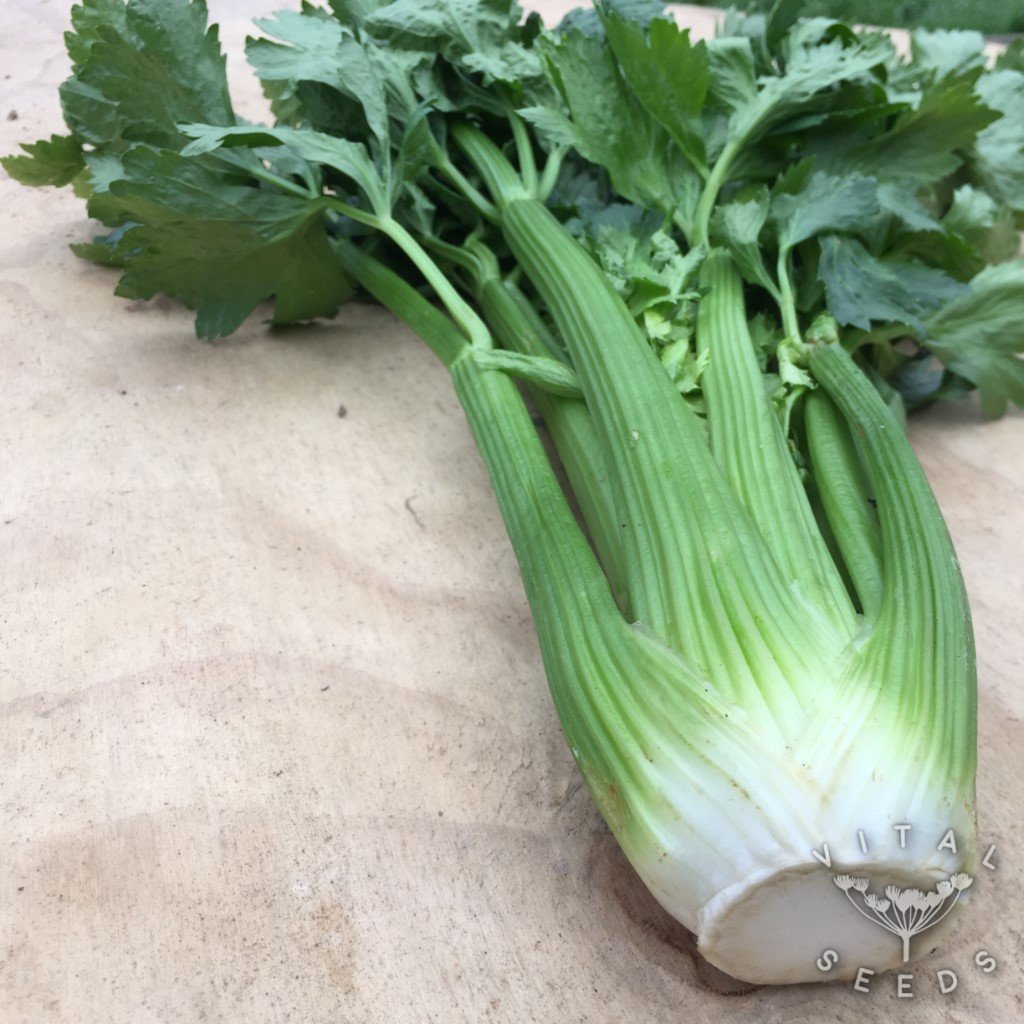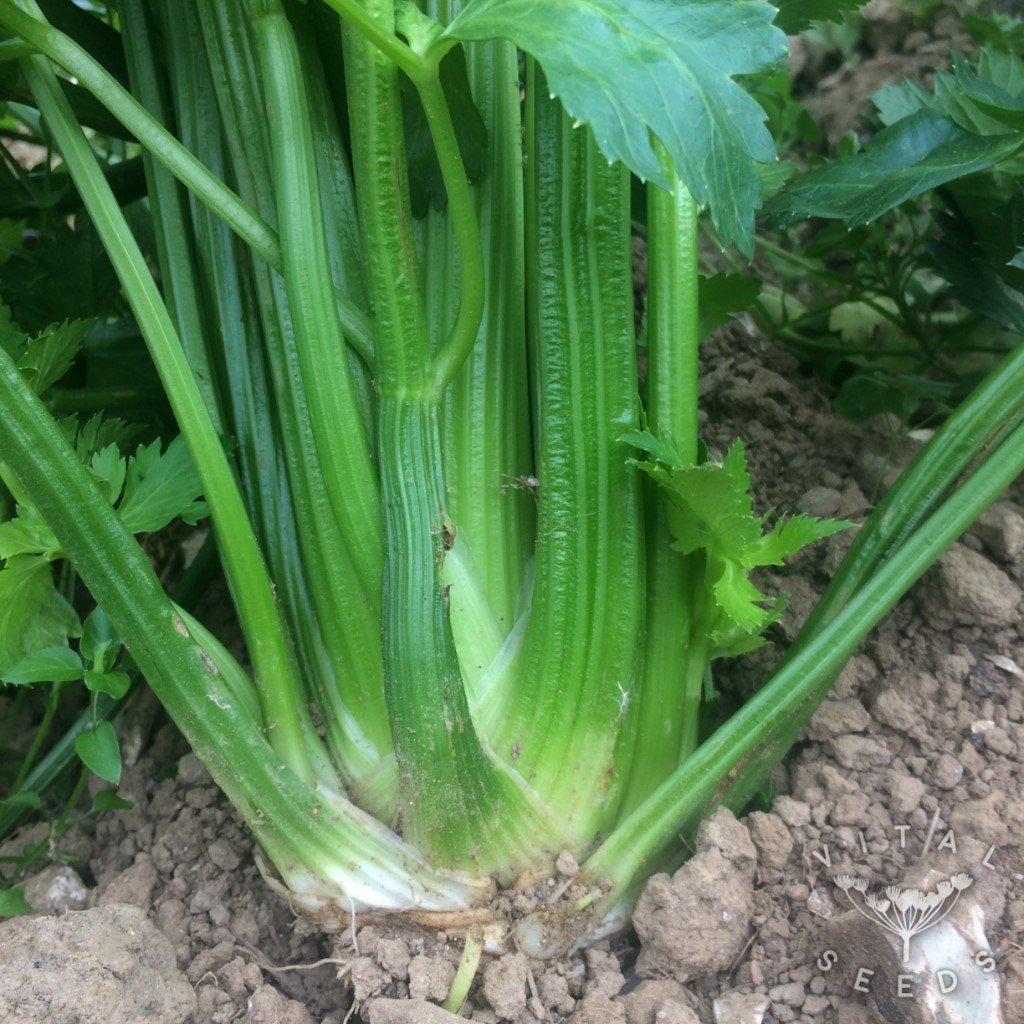Celery – Tall Utah (Organic)
£1.60
A classic variety of celery producing thick crunchy stalks . We love the deep green colour of this celery and its super-crunchy string-less stalks. It was first introduced in the USA in 1953 and was the outcome of a breeding program by the Ferry Morse Seed Company in California. It was developed to be resistant to many common diseases of celery, and remains a reliable variety to this day.
(Approximate seed count – 200)

Only 19 left in stock
| Month | J | F | M | A | M | J | J | A | S | O | N | D | ||||||||||||
|---|---|---|---|---|---|---|---|---|---|---|---|---|---|---|---|---|---|---|---|---|---|---|---|---|
| Sow | ||||||||||||||||||||||||
| Plant | ||||||||||||||||||||||||
| Harvest | ||||||||||||||||||||||||
Seed Sowing
Sow your celery seeds between February and May and your celeriac between February and March. Both can be sown indoors with heat and even extra light from February and from late March without it when light levels will be sufficient. Surface sow in modules and use a fine misting spray to water regularly. Direct sowing is not very reliable, with germination being patchy and taking up to 6 weeks; surface sown seeds can easily be washed or blown away.
Transplanting
Ensure your seed bed is free from weeds and add plenty of organic matter to help with moisture retention. The plants will tolerate full sun or partial shade, harden off and plant out with fleece from May when the chances of frost have passed, or later if you’re having cold nights; sudden temperature drops can cause bolting. Space at 30 cm x 30 cm and water well. Celery is better planted in blocks to shade and help blanch the stems.
Plant Care
Native Apium plants flourish in marshy growing conditions, and both celeriac and celery need to be kept well watered. They are thirsty plants and will bolt if left to dry out; a good mulch works well. Traditionally, celery would be grown in trenches and buried as it grows to blanche the stems, most varieties now are self-blanching so this is not necessary. Wear gloves, as sap from the leaves can cause photosensitive rash.
Challenges
Celery and Celeriac can be affected by celery Leaf miners which eat between the layers in the leaf and should be removed as soon as spotted. Slugs and snails also like the young plants, so protection is needed.
Harvest
Celeriac is pretty hardy and can be left in the ground all winter and harvested when needed. It takes around 120 days to reach maturity; dig up and remove the leaves. Celery is ready from midsummer till late autumn, until the frost hits. Once it’s big enough, dig up and chop off the roots, leaving the basal area to keep in a bunch. It can be stored in a shallow jug of water to prolong crunch if you can’t use it all immediately.
Culinary Ideas
Celery and celeriac have similar flavors but different textures. Celeriac can be grated into salads, roasted, boiled, and fried; it makes a great mash. Celery is a base note for many dishes; a combination of celery, carrot, and onion is called mirepoix in French and sofrito in Italian and gives a great depth of flavor.
Seed Saving
To save celery and celeriac seeds, make sure to isolate them as they cross with each other as well as wild celery. They are insect-pollinated, so will need pollinators or hand pollination if isolated in a cage. Leave your best plants to flower, avoiding early bolters. Harvest when the seed head has turned brown. You can remove seed heads and leave in a dry, well-ventilated place to dry for at least 10 days. Rub the seeds off the dry plant, remove the chaff, and store in a cool dry place. Stored this way seeds can remain viable for up to 7 years.


